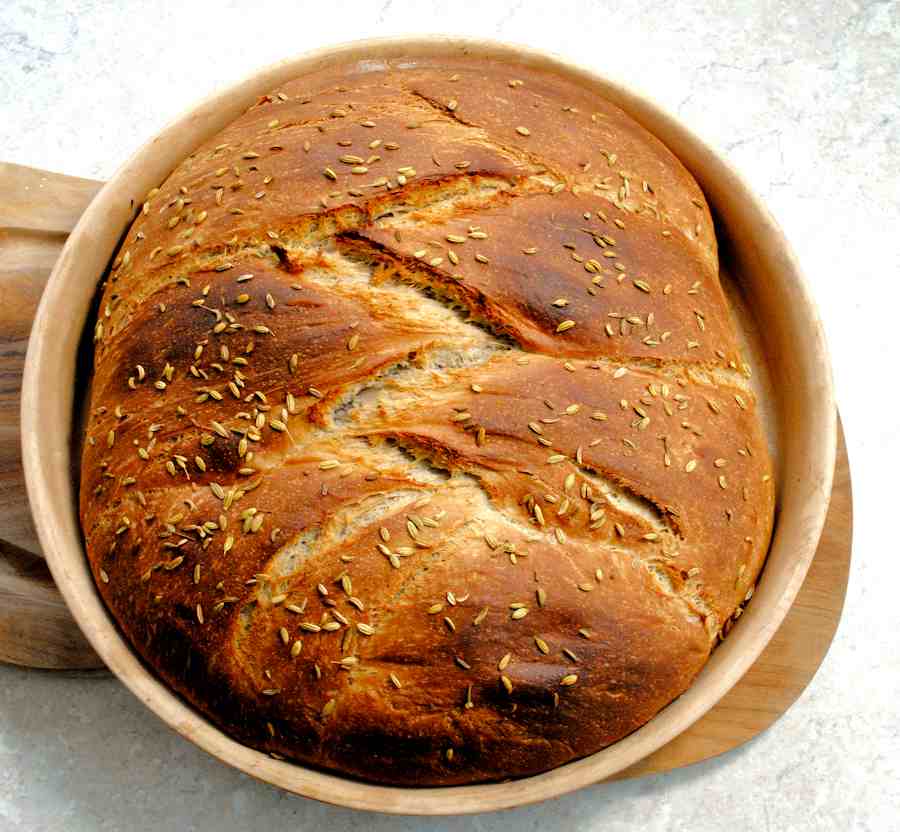Dabo - Ethiopian honey bread
Updated: Fri, 25 September, 2020
Yemarina yewotet dabo is a wonderful bread traditionally baked for Ethiopian festive occasions. I usually bake it for Christmas!

What does 'dabo' mean?
Dabo means ‘wheat bread’ and the full original name of this wonderful loaf is yemarina yewotet dabo: honey and milk bread. That is a beautiful name for a bread. It reminds me of the biblical 'land of milk and honey' so dabo is the promised land bread. It probably originated with the Ethiopian Jews as it seems very much the kind of bread that would be eaten at Shabbat.
Festive ingredients in dabo
This dabo is a rich bread: with egg and butter, milk and honey, and fragrant spices. Honey is apparently plentiful in Ethiopia but the use of it in everyday baking is not common; neither is use of eggs, spices and milk, so this is a truly special, festive product. The dough is sometimes plaited into a loaf redolent of challah - another proof for its Israelite origin.
What is honey and milk dabo like?
In a word - gorgeous. The dough is easy to work with so even if you knead by hand, it won't be back-breaking. The spices come through beautifully: I use cardamom, allspice, cinnamon and ginger, after Vanessa’s recipe from Bakery Bits blog, but I’ve seen coriander and cloves listed as ingredients in other recipes.
The crust is thin and dainty, shiny with salt glaze and studded with bursts of fragrance from the fennel seeds. The crumb is tender and soft, and not quite as sweet as you might think.
How to bake your dabo?
Challah is usually baked straight on a baking tray but dabo turns out better if the shape is contained somewhat. You can use a large cake tin or a roasting dish. If you have one of those clay bread baking domes or cloches - it will be ideal. Dabo will also bake better if it is covered by a clay cloche or a Dutch oven for the first half of the oven stay.
Special or everyday occasion
It is traditionally a festive loaf, and I said I baked it often for Christmas. But there's no reason why you can't bake it and enjoy it more often. It's delicious fresh from the oven, but it makes a great toast as well. And if you reduce the amount of honey, you can happily slice it for sandwiches.
Originally published: Fri, 11 December, 2015
NEW recipe finder
Ingredients lying around and no idea what to cook with them? Then use my NEW Recipe Finder for inspiration!
Recipe Finder
Leave a reply
Your email address will not be published
Push notifications
You are subscribed to push notifications.
You have unsubscribed.

We'd like to notify you about the latest recipes and updates
You can unsubscribe from notifications at any time
Cuisine Fiend's